Student Experiments
Science can get pretty messy sometimes, but somebody has to do it. Glad to see that Shai is up to the task. Here he is experimenting with oobleck:
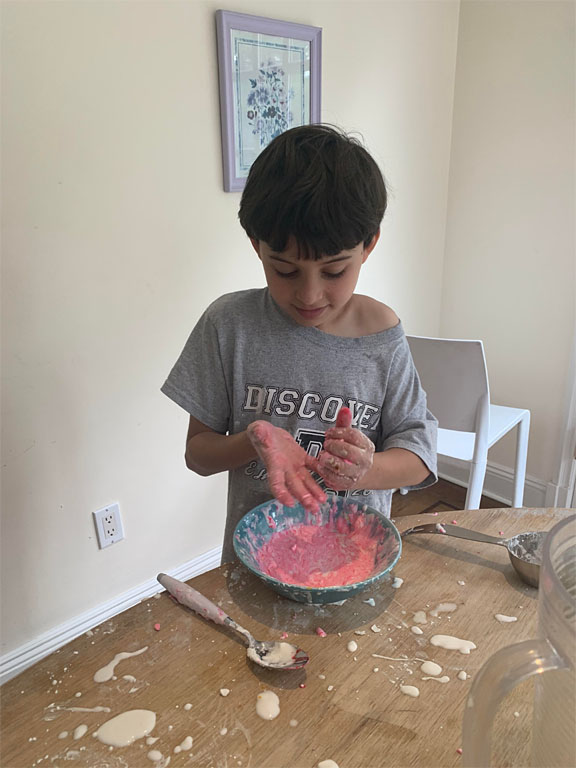

Looks like you're making some interesting discoveries. You did clean up everything when you were finished, right Shai?
Ari, Gabe and Talia were experimenting with homemade pH indicator.
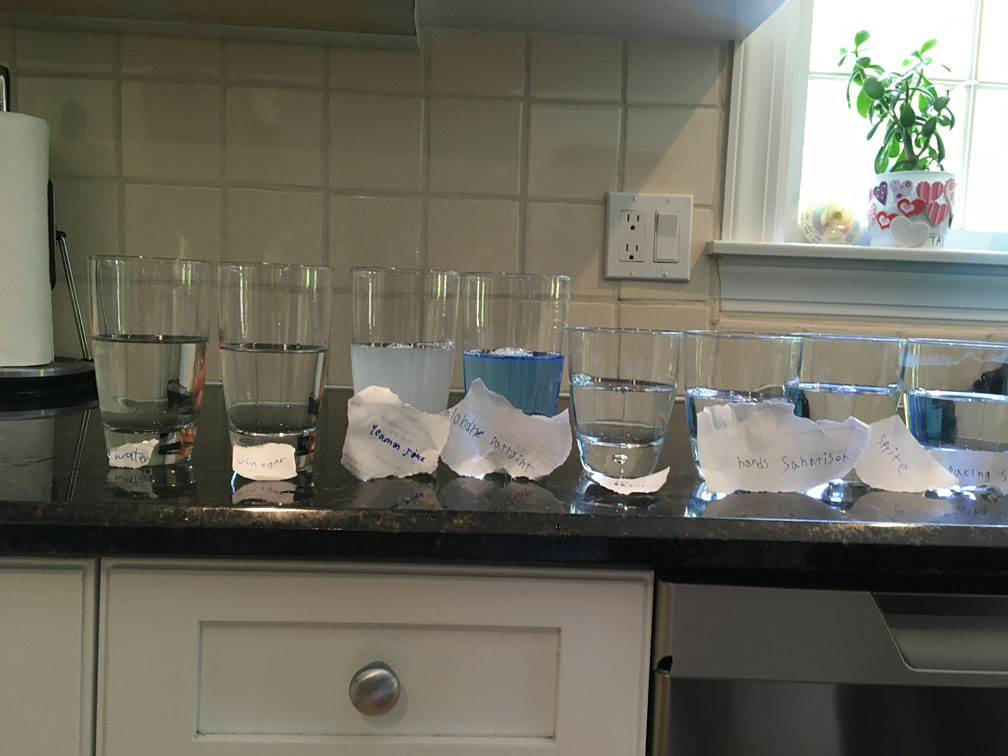
Here is what he wrote: "Yesterday my family did an experiment with cabbage. We boiled cabbage in water so all of the purple cabbage color rubbed off the cabbage and into the water making it (the water) purple. Then we poured the water into the cups until we had just a little purple water left. The substances we added to each cabbage water cup were laundry detergent, baking soda, sugar, hand sanitizer, vinegar, sprite, vinegar with water, and lemon juice.
This is what color each substance made: Laundry detergent- dark blue, baking soda- yellowish, sugar- light purple, hand sanitizer- light blue, water- very light pink, vinegar- mix between pink and red, sprite- pink, vinegar with water- slightly dark pink, lemon juice, pink.
Every single substance left the water see through except lemon juice. These are the pictures from the beginning to the end."
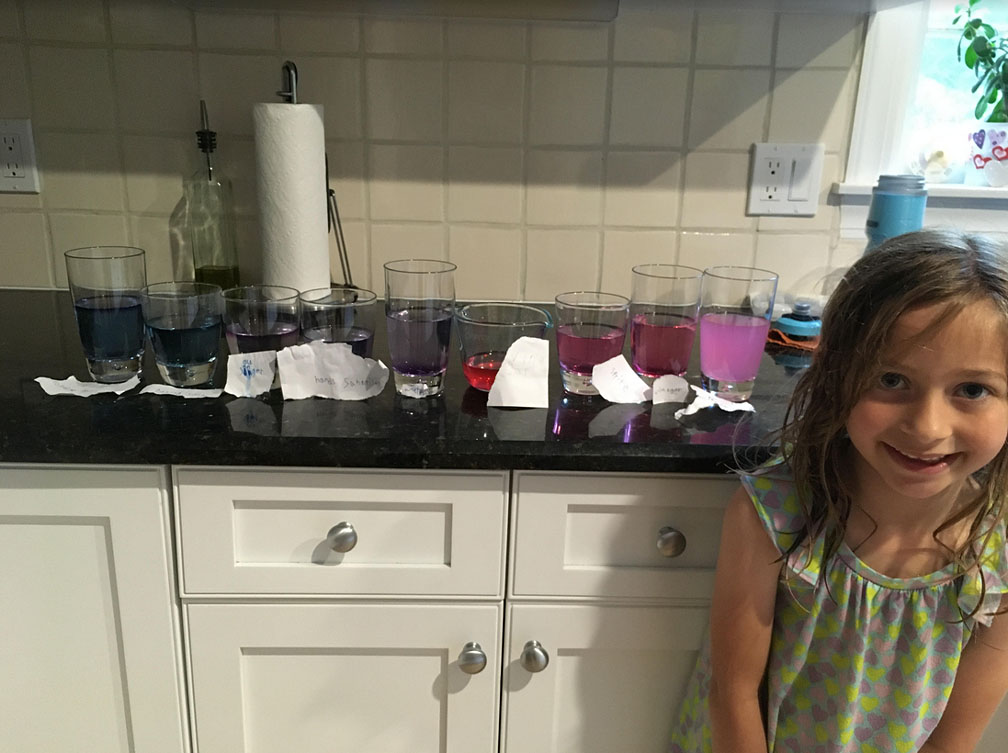
"This picture is what we did with the remaining cabbage water."
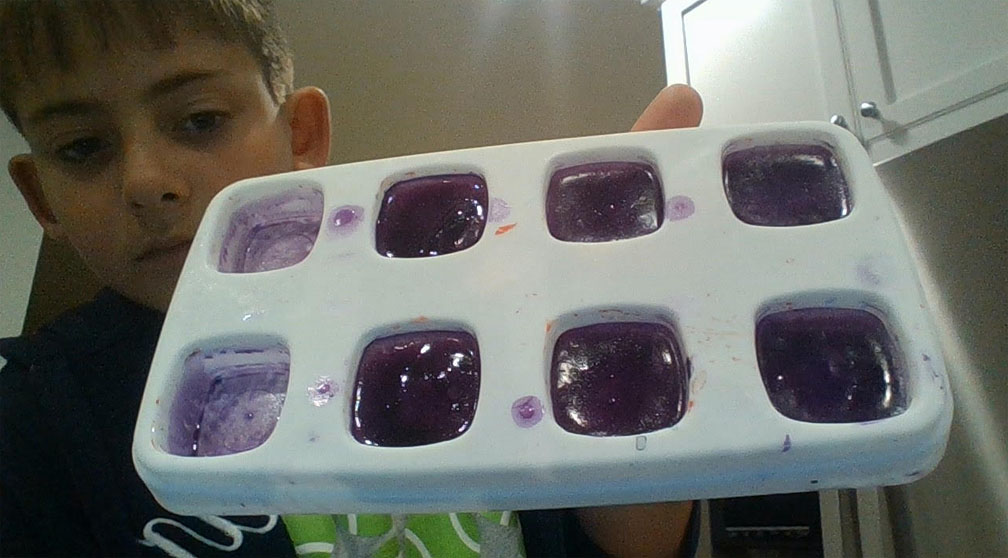
Thank you for telling us about your experiment, Ari. I love it that you're teaching you younger sister to do science. Of course, now I'm wondering what you plan to do with the red cabbage ice cubes.
Looks like Ilan and Shai are at it again with a new experiment:

What are these two young scientists up to? Check out their new Video to find out.
Caleb wrote that 1 or 2 years ago he did an experiment where he planted about 100 pine cones on both sides of his fence. He writes: "before this these places just had a lot of uninhabited land that had lots of what looked like sand." Now that spring is here, it's time to start looking for pine seedlings, so he sent in some photos:
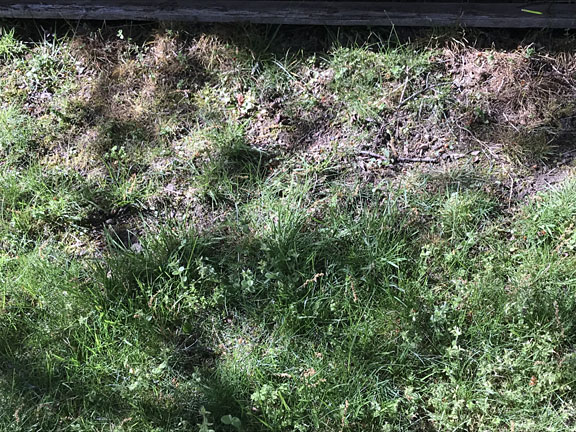
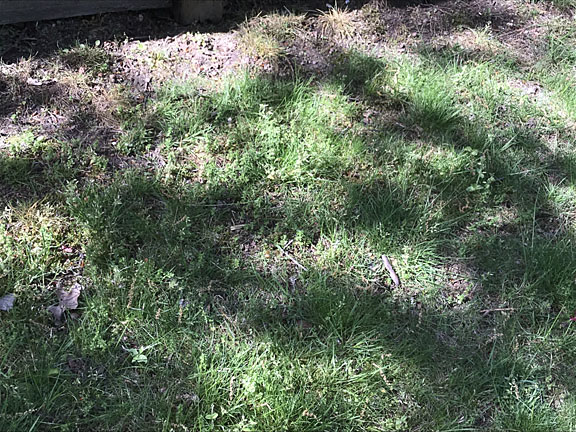
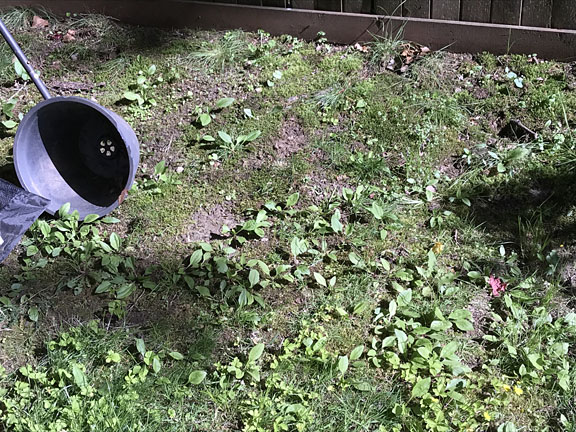
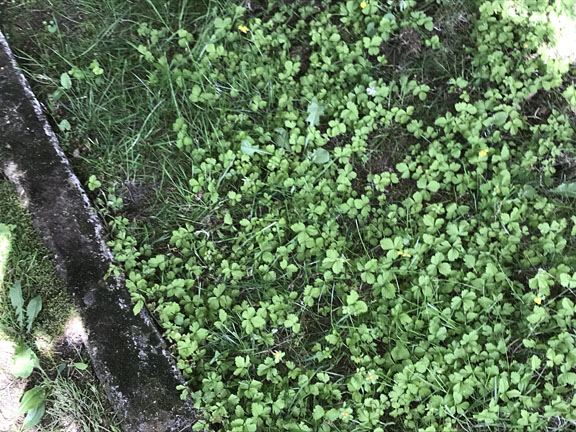
Can anyone see any seedlings in these photos? If you can, please let Caleb know.
Gabe did an experiment with M&M's. His older brother Ari explains: "He poured water into a small glass plate and then he placed M&M's around the plate."
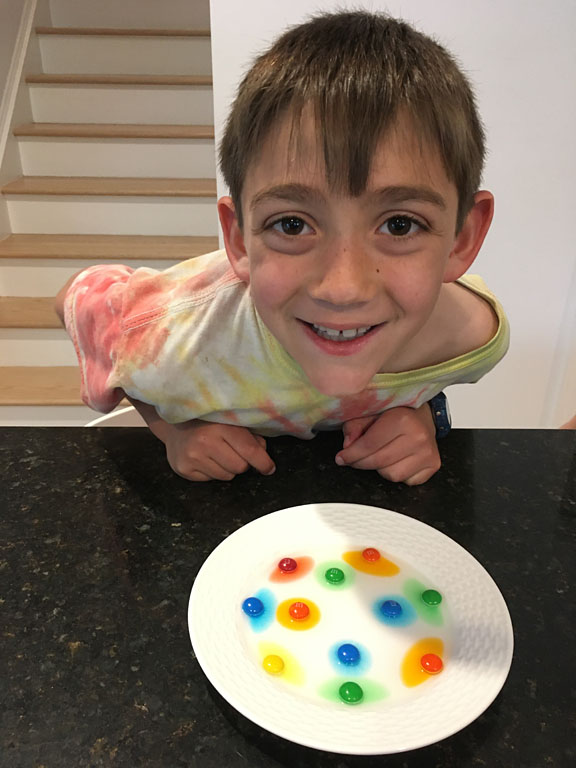
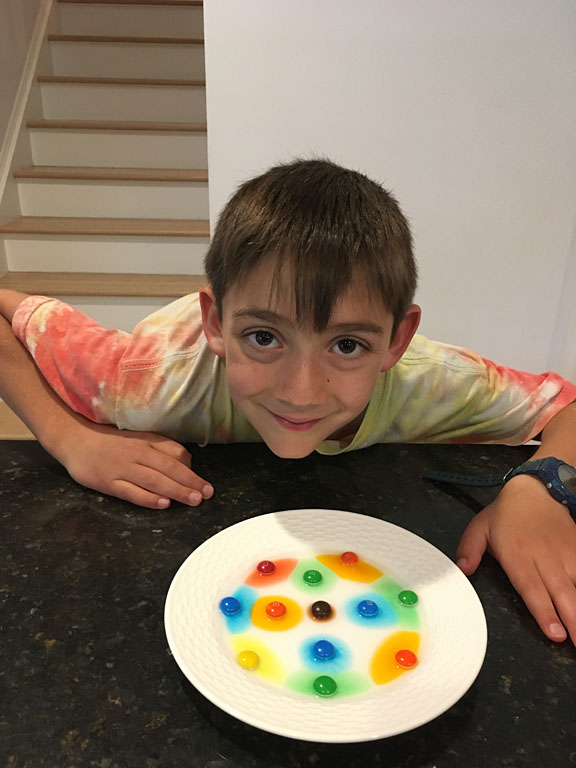
"These 5 pictures are what happened from beginning to end by the minute."
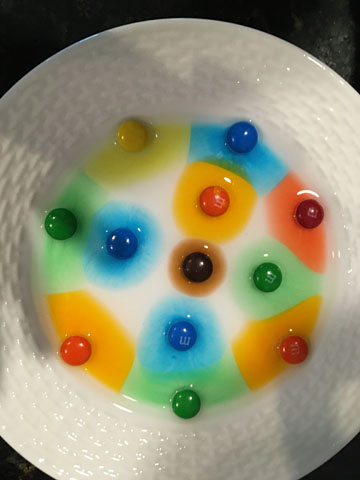
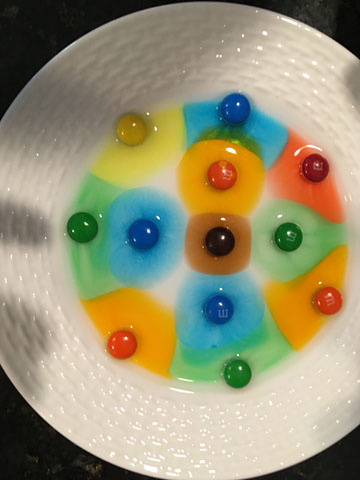
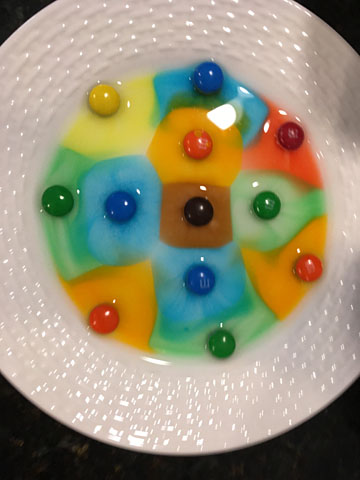
Wow! How what a beautiful experiment.
"The last picture was what it looked like after a few hours."

Okay, so that's not quite as beautiful as the earlier pictures, but it's still a neat experiment.
I wonder, what do you think he did with the M&M's afterwards? (I probably would have eaten them.)
Gemma has conducted some experiments with acid-base reactions. The results were beautiful. The video is in three parts. Here they are: Part 1, Part 2, and Part 3. By the way, if you watch Part 2 very carefully, you will see that the reaction doesn't start until the powder reaches the water. Many chemical reactions can't happen without water, including many of the reactions in your body that keep you alive. That's why water is so important for life.
Ilan sent in two new videos of experiments that he and his brother Shai have conducted. This first experiment they call Swimming Spaghetti. Here is what they wrote: "The boys put water, baking soda and spaghetti in this glass and when they added vinegar they were excited to see that the spaghetti started to swim!" The second video is called Lava Lamp. Here's how he did it: "Ilan filled a glass with vegetable oil, food coloring, and water. Then he added salt and it created a lava lamp effect."
Ascher saw this Video that inspired him to try to create a mini ecosystem in a jar:

I think we all look forward to seeing what happens inside this enclosed ecosystem. I hope you will keep us updated, Ascher.
Belle experimented by mixing flour and seltzer. Here is what she wrote:
"I wanted to see what would happen if I mixed . . . 1 cup of flour and 1 cup of seltzer, and this is what happened."
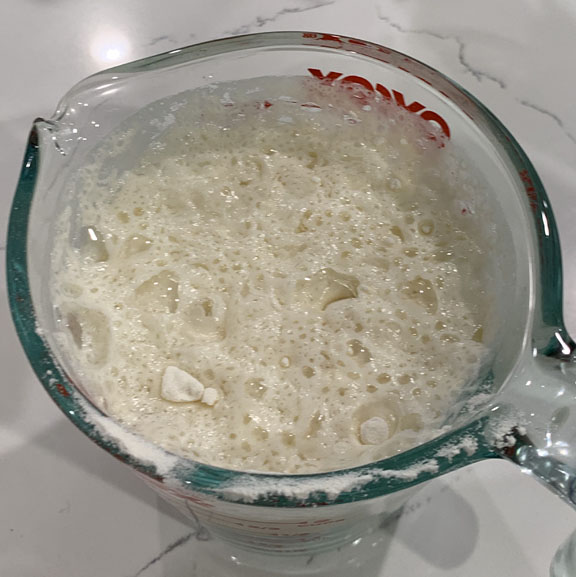

"It seems like the flour mostly stayed at the bottom and the seltzer stayed mostly in the middle and at the top there is a mixture of seltzer and flour."
Have you ever heard the expression "there is strength in numbers"? Looks like Belle has shown us that there is also density in numbers. Thanks for the lesson, Belle.
Nathaniel made a Sundial. Looks like he spent most of the day marking the different times on it, from 9:00 in the morning all the way until 6:35 in the evening:
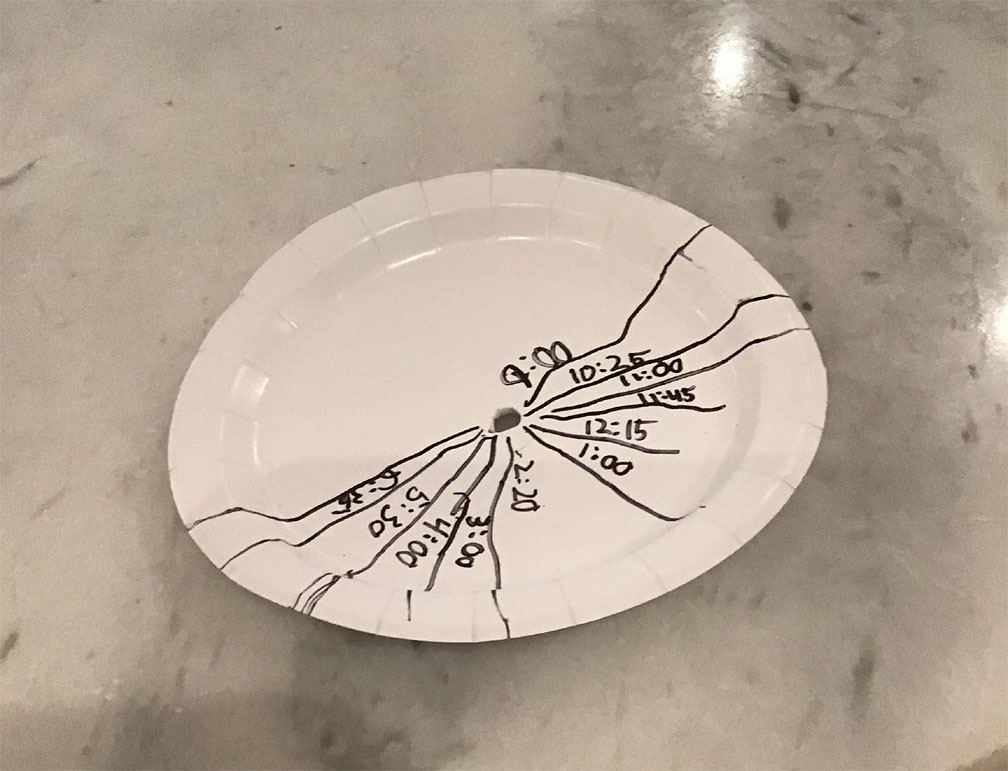
Nice work, Nathaniel. I hope will will test it in a week or so to see if it is still accurate. Let us know if you do!
Ari built a fishtrap. He cut the top off of a 2-liter bottle and glued it back on upside-down, so things can swim into it but not back out. He placed it in the water for a while to see what he might catch with it. Here are two photos that he sent, one of the trap, and one showing something--fish? tadpoles?--that were caught inside it:
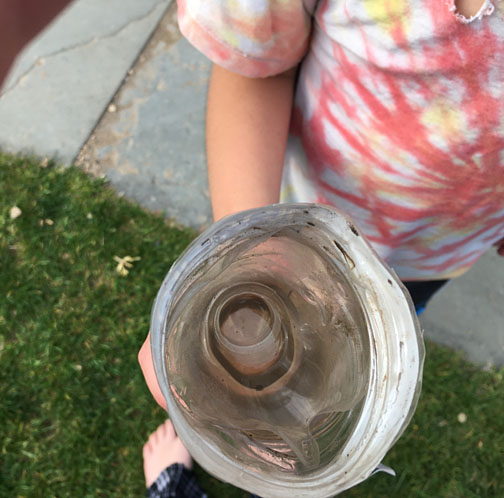
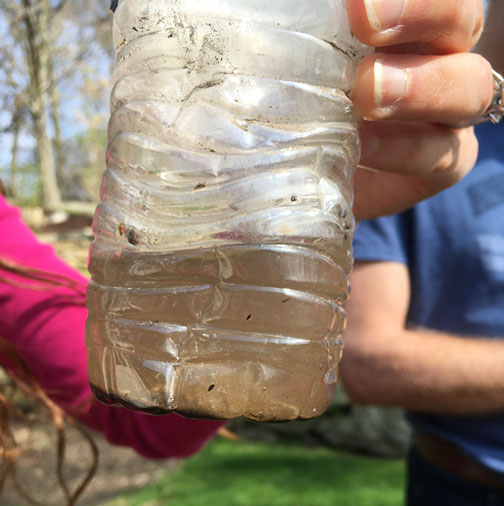
What do you think he caught?
Ilan and Shai continue doing interesting experiments. In this one, Shai filled 3 cups of water with a different dye in each of them. In between each he put an empty cup. Then he joined them with folded paper towels.
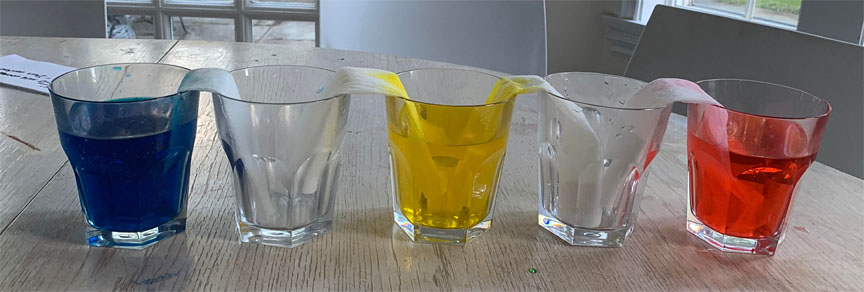
After a few hours he observed that the empty cups started to fill up with liquid.

Eventually the empty cups had dyed water in them.

What pretty colors! But all he started with was blue, yellow and red water. Where did the green and orange water come from?
Ilan and Shai did some experiments with milk, soap and food coloring. They sent in this photo:

Here is what they wrote: "Ilan and Shai put milk in a bowl then added food dye drops and a drop of hand soap then touched it with a cotton ear bud and it created color changing milk. The colors in the milk continued to move even when the cotton earbud was removed."
Here's a Video of their experiment. Looks like they made some beautiful designs. I think it's fascinating that the colors continued to move even after they pulled out the cotton earbuds. I'll bet the soap was doing something weird to the milk.
Has anyone else ever experimented with milk, food coloring, and dish soap before? Seems like a fun experiment.
The boys also tried putting some crayons in a cup of water and setting the cup in the sunlight. Can you see what happened?

Look here. It made a rainbow on the floor!
I wonder, do you think the rainbow was caused by the crayons, or by the water in the cup, or maybe by the rim of the cup?
Can anyone figure out a test that might allow us to determine the answer?
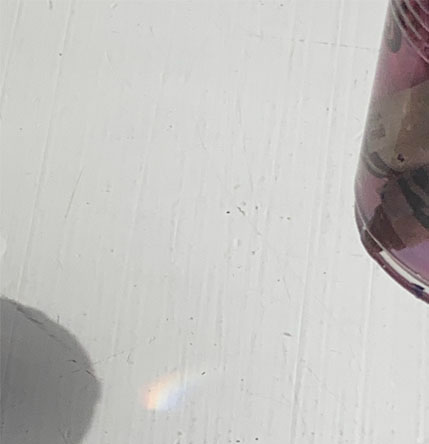 The boys conducted three more tests to try to determine what caused the rainbow. First they tried to make the rainbow a second time with the water and crayons in the cup. Can you see the rainbow? |
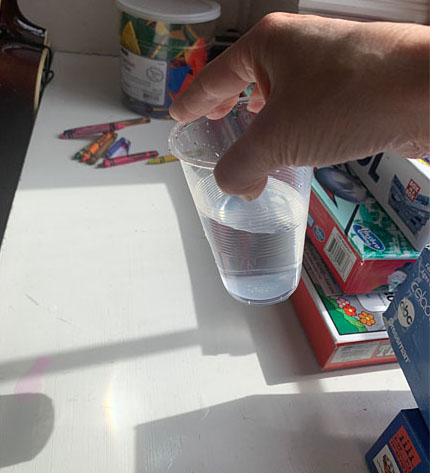 Next they tried to make a rainbow with just water and no crayons in the cup. Looks like they were able to make one. |
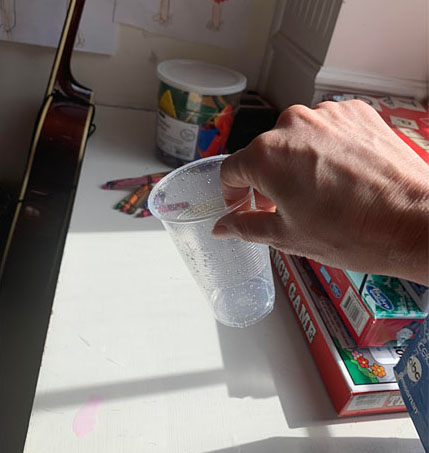 Then they emptied the water out of the cup and tried to make a rainbow with just the empty cup. Can you see a rainbow here? I can't. |
Ilan and
Shai also experimented with sound: You can hear what they discovered on this Video. They filled glasses with different amounts of water then hit them with a drum stick to see what would happen. They were surprised to discover that each glass made a different sound when hit. They also observed that the less water in the glass the higher the sound. |
They also made a Volcano.  This Video shows them making it. If you follow their directions, you can make one, too. It's very exciting and a little messy). Check it out! |
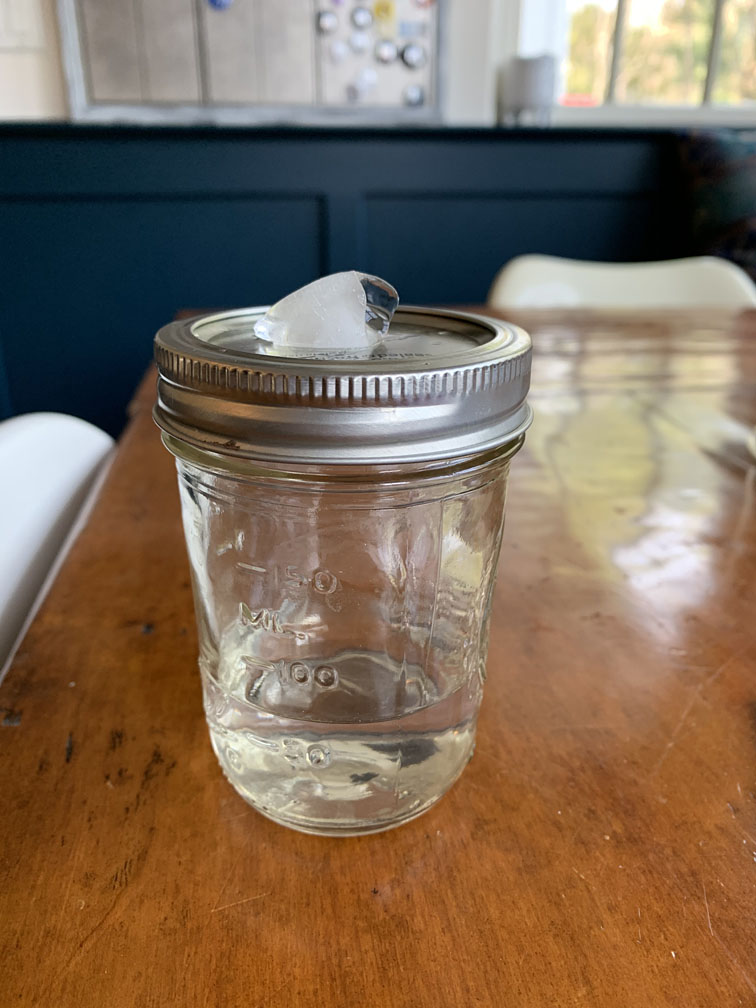
This is what he said about it:
"You can’t tell [from the photo] but we did successfully create the “cloud.”
It’s hairspray, warm water and ice. It uses the temperature differential to cause the cloud formation at the top of the jar".
Really interesting, Ascher. I'm glad that you were able to see the cloud.
What do you think Ascher means by "temperature differential"? Any idea why that would make a cloud?
I'll give you an important hint: warm air can hold a lot more moisture than cold air.
Would you like to try this experiment? This web site shows two different ways to make a cloud in a jar:
How to Make a Cloud in a Jar.
Have you done any experiments at home that you would like to share with your friends and classmates?
Send your photos and a desciption of what you did to gsimonelli@leffellschool.org and I will publish them on this web page.BACK TO 3RD GRADE SCIENCE PAGE
BACK TO 4TH GRADE SCIENCE PAGE
BACK TO 5TH GRADE SCIENCE PAGE